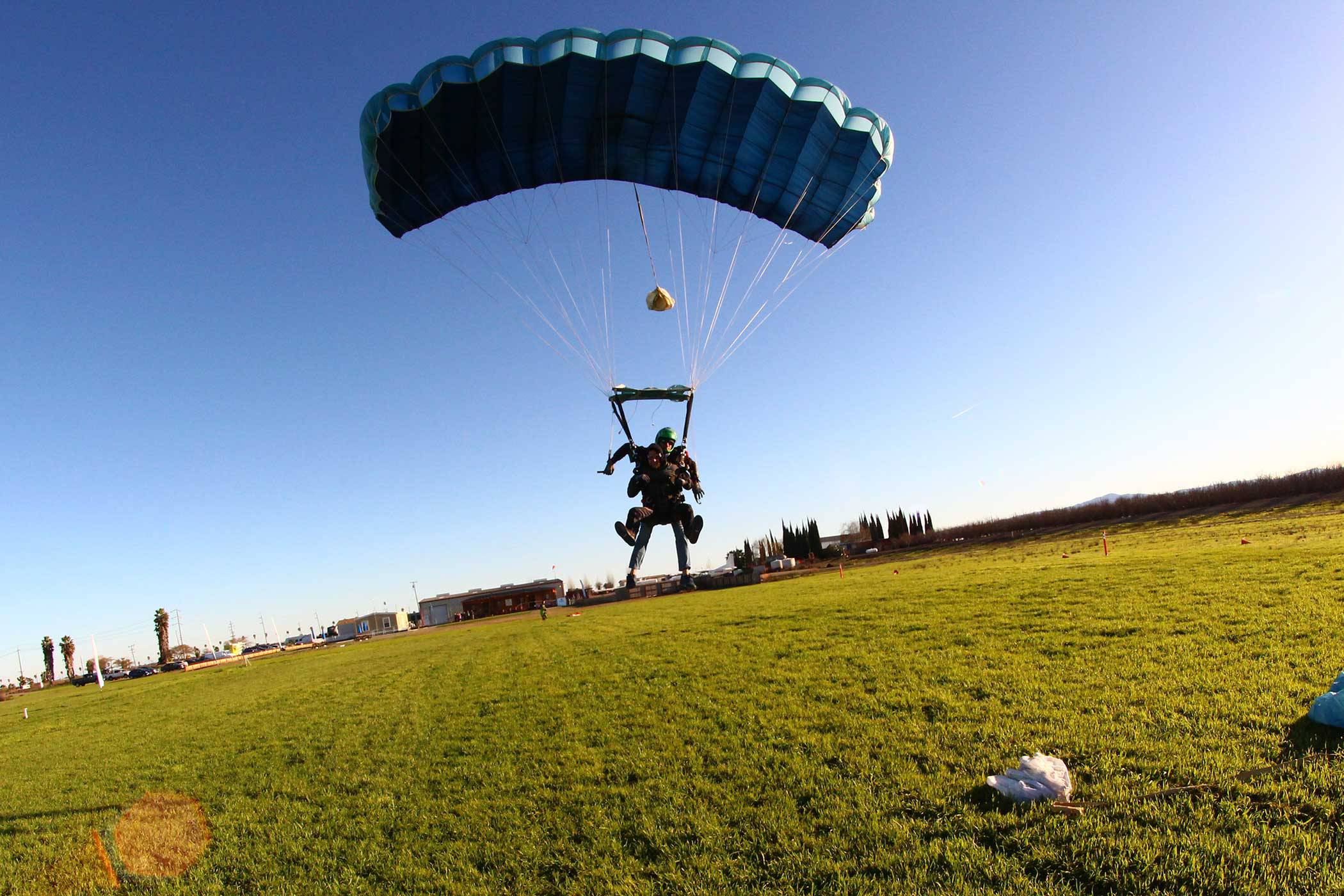Once you’ve decided to go skydiving for the first time, the number of questions you wish to have answered starts to increase. This is a perfectly normal part of the process, and the Skydive California team is here to help you every step of the way – while you are with us, and also when you head back out into the world as a brand new skydiver.
Movies and TV shows like to show skydiving as a careless activity that concludes with a thump on the ground in a big ol’ pile of dust. Can that happen? Sure. Does it? Not much anymore! Thanks to huge strides in skydiving technology and safety protocols (more on that later), most of the time parachute landings are actually quite graceful.

Here’s what to know about the skydive landing…
Technology
OK, before we talk tech, let’s get back to the question underlying that big ol’ pile of dust: is skydiving dangerous? Of course it is! (And that’s part of the fun!) You’re jumping from a perfectly good airplane for goodness sake!
Skydiving is a lower risk than you might think, though – and that’s due to enormous advances in skydiving tech and governance, namely from the United States Parachute Association (USPA) and the Parachute Industry Association (PIA).
Skydiving Landings & Parachutes
When civilian skydiving first came on the scene, sport jumpers were reliant on military surplus gear, which included the now-iconic round parachute. Skydivers were left to the will of the wind under “rounds” and were unceremoniously plonked on the ground in a way that required an undignified tuck and roll.
Square “canopies” were discovered to be a vastly better idea, and upon invention quickly became the standard parachute shape. The square (rectangular, actually) parachute is the sophisticated ram-air design used in modern skydiving. Openings along the front of the canopy let air inside individual channels, creating a rigid and powerful wing shape that is designed to descend. Those physics terms you thought you’d never need in adulthood, including lift, drag, weight and thrust, allow the canopy pilot to have precise maneuverability, including the ability to decelerate with ease and touch down gently. Long gone are the days when skydiving landings were a dread-filled event.
It’s worth noting that in the early days of skydiving, the majority of skydiving fatalities occurred due to parachute malfunctions. Thankfully, gear malfunctions are extremely rare today. In fact, according to the USPA, 2021 was statistically one of the safest years on record in skydiving history.
Tandem Landings
When you tandem skydive, you are harnessed together with an experienced instructor. Tandem skydiving is a great way for people to experience skydiving with minimal training or expense – but, contrary to popular belief, the tandem student is more than just a passenger.
If you picture the tandem instructor and student linked together, piggy-back style, you can see why the work required of the tandem student mostly comes into play during the landing portion of the skydive experience. During the training session, you’ll learn the ultimate of all skydiving landing tips: lift your legs perpendicular to the ground as you come in to land. While some students land standing up with their instructor, the vast majority slide in to home base on their butt. But gravity won’t keep you down long! As soon as you’re free from your harness, you’ll be whooping and hollering in celebration of your spectacular accomplishment!

Solo Landings
Learning to skydive solo is primarily achieved via an AFF (Accelerated Freefall) course. In this program you do plenty of ground training, and then jump from the full skydiving altitude of 13,000 ft while two instructors support you on the way down. For this you get your own parachute from the first jump. Eeek! Now what? You are in charge of landing, but don’t be anxious about it – you are given all the training you require to fly back to the landing area and touch down as easily as hopping off a step.
Student parachutes are large and user-friendly, which makes flaring easy to get right. It takes practice to confidently and consistently pull off flawless skydiving landings; it’s all part of the learning process.
…
Ready to put what you know about the skydive landing into action? Come and jump with us!







